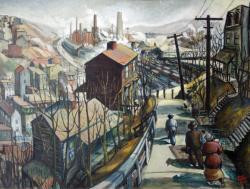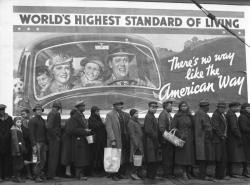Kate Harris
Social Studies teacher
Pittsburgh CAPA
Middle School (13 to 15 years old), High School (16 to 18 years old)
Teacher/Educator
Language Arts And English, Civics, Literature, Cultures, Economics, Social Studies, Geography, Writing, US History, Arts, Other
I'm a history-lover, art fan, and bookworm. I taught high school history (U.S. History and World Religions) for ten years in North Carolina, teach currently in Pittsburgh, PA, and am working to help teachers make the most of this new resource!
Kate Harris's collections
School Integration
<p>The topic of K-12 school integration is a complex one that goes far beyond an understanding of that landmark case, Brown v. Board of Education of Topeka, Kansas. How have efforts at integration been sustained in the 60+ years since that case was first decided? How have concerns about socioeconomic differences been addressed (or not addressed) through school districting? How do district and national policies impact individual students for better or worse? This is a topical collection that addresses the history of school integration but also includes references to and resources reflecting the issue today.</p><p>Tags: segregation, Little Rock Nine, desegregation, charter schools, Arkansas, busing, Boston, racism, prejudice, civil rights</p>
 Kate Harris
Kate Harris
14
Emmett Till: Confronting a Difficult History
This collection looks at how a tragic incident like the murder of Emmett Till is remembered in American history and national memory, as well as the significance of the decision of Till's mother, Mamie Mobley-Till, to share her son's loss publicly with an open-casket. Her actions created a galvanizing moment for the modern civil rights movement, heightening its significance and influence. The collection includes photographs, art work, and two newspaper articles about modern memorials to Till and other lynching victims.
Teachers might use the following images as the basis for silent discussion (see the Big Paper strategy from Facing History, included on the last resource) prior to a group conversation on the following questions:
-How did this case impact the civil rights movement?
-What were the effects of having an open casket at Till's funeral? How does media continue to impact the civil rights movement?
-How should Emmett Till be remembered and honored? How should his mother be remembered and honored?
-Should national memorials and museums include objects like Till's original casket or the soil from lynching sites? Why or why not?
 Kate Harris
Kate Harris
6
Pangu and the Chinese Creation Story
<p>This student activity teaches students about the Chinese creation story of Pangu and introduces them to other common symbols in ancient Chinese mythology. </p><p>Guiding questions include:</p><p>-How does this story compare to other creation myths you may know? Are there common elements?</p><p>-In what way does this story reflect a distinctly Chinese culture or system of belief?</p><p>Tags: Pan gu, Panku, creation, origin, myth, compare contrast, yin yang, Taoism, Daoism, Buddhism, Buddhism, Confucius, Laozi, dragon, qilin, turtle, phoenix, ancient China, religion</p>
 Kate Harris
Kate Harris
11
Pittsburgh's Urban Renewal
<p>This collection was created to support a workshop on integrating primary sources and student writing for teachers at Peters Township High School. These resources can be used to design a document-based question to answer the following inquiry:</p><p>Were Pittsburgh's urban renewal programs in the 1950s and 60s ultimately helpful or harmful?</p><p>Teachers may want to excerpt the documents included in this collection before giving them to students to use. You may also want to introduce students to the concept of "purposeful annotation" as they read through the documents (resources included).</p><p>Finally, an articles on urban renewal today and a lesson plan from Global Oneness Project on gentrification and urban renewal in Seattle provide additional resources for teachers.</p><p>Tags: C3, Inquiry, urban renewal, demolition, construction, slums, Teenie Harris, Charles Olmstead, Pittsburgh</p>
 Kate Harris
Kate Harris
17
Negro League Baseball
<p>This is a topical collection of resources related to the Negro Leagues. Students and teachers can use this collection to supplement United States history lessons from after the Civil War through the mid 20th century. Sports often echoes social and cultural changes that take place in the nation and reflect the norms of the times. </p><p>tags: baseball, civil rights, African-Americans, Homestead Grays, Satchel Paige, Hank Aaron, Buck Leonard, Josh Gibson, Cuban Giants</p>
 Kate Harris
Kate Harris
13
TRETC Explores the Learning Lab
<p>Let's take a journey to see what the Smithsonian has for you and your students. We will use this as a FRIENDLY challenge, and as a way to explore the types of diverse resources and features found in the Learning Lab.</p>
 Kate Harris
Kate Harris
12
Sacco and Vanzetti
<p>Students may use this collection to explore the reasons why Sacco and Vanzetti became a celebrated cause among liberal activists in the 1920s, and how their trial exemplified cultural divisions that emerged during the decade. Examining artists' perspectives on the trial through visual arts and music will help provide insight into the era. </p>
<p>Tags: 1920s, Twenties, immigration, nativism, anarchy, socialism, Red Scare, crime, justice, inquiry, continuity and change</p><p><em>#historicalthinking</em></p><p><br /></p>
 Kate Harris
Kate Harris
11
How We Vote
<p>This collection invites users to explore how Americans have voted throughout our history and the innovations that have improved the voting process. Students will closely investigate images from the 19th and 20th century in order to determine potential flaws and improvements in the democratic process. Links to websites for additional reading are included as well as assessments and a possible extension activity. </p><p>Guiding questions:</p><p>-How has the process of voting changed in the last two centuries? Consider who, what, when, where, why, and how when answering this question.</p><p>-How have technological changes enhanced voting? What challenges remain?</p><p>Tags: civics, elections, campaigns, vote, ballot, ballot box, democracy, electoral process, change over time, cause effect</p>
 Kate Harris
Kate Harris
11
Numbers
<p>This collection is an example of how the Learning Lab could be used to create number or alphabet books for younger students. Students can search for the numbers and letters represented in the art, sculpture, and artifacts that exist throughout the Learning Lab. </p><p>Alternatively, students could be given a specific theme (animals, for example) and be tasked to find images representing the theme for each letter or number. Annotation (notebook tabs) can be used to include additional text or explanations. Quiz questions could be used to ask "how many ________ are in this image?".</p><p>Have fun!</p><p>Tags: reading, books, alphabet, numbers, counting, math, young learners, early childhood</p>
 Kate Harris
Kate Harris
17
The 1980s: A Decade Collection
<p>This is a topical collection about American life and politics in the 1980s. Resources in this collection might be helpful to students and teachers working on projects about the decade. It is not meant to be completely comprehensive, but rather includes highlights of the Smithsonian's collection spanning art, popular culture, social trends, leadership, and technology.</p><p>Teachers and students might copy and adapt this collection to suit their needs; highlighting a specific aspect of life in the 1980s and adding annotations and additional resources.</p><p>tags: Eighties, Reagan, George H. W. Bush, rap, detente, Vietnam, politics, decade, Cold War, Olympics, boycott, space shuttle, star wars, Reaganomics, trickle-down</p>
 Kate Harris
Kate Harris
42
Communes, Counterculture, and the Back to the Land Movement
<p>This collection includes a variety of photographs taken by Lisa Law. Students will examine the photographs and a few artifacts and try to draw conclusions about the ways in which the commune or back-to-the-land movement challenged the norms of traditional United States society in the 1960s and 1970s. A link to an exhibit website is include and allows students to check their assumptions, and students are asked to compare elements of the counterculture with that of mainstream 1960s and 1970s culture. </p><p>Tags: counterculture, commune, hippie, granola, back to nature, communal living, co-op, cooperative, sixties, seventies, Woodstock, change over time, compare, ashram, silent majority</p>
 Kate Harris
Kate Harris
10
Red Caps and Pullman Porters
<p>This is a topical collection of items relating to red caps and Pullman porters, positions associated with train travel during the 20th century.</p><p>Teachers and students might use this collection to explore how these jobs reinforced the social status of African-Americans while at the same time ensuring steady, reliable work and the rise of an African-American middle class. They also might consider the impact of A. Philip Randolph and the Brotherhood of Sleeping Car Porters. How did the development of this labor union later impact the Civil Rights movement?</p><p>tags: amtrak, railroad, trains, sleeping car, segregation</p>
 Kate Harris
Kate Harris
14












